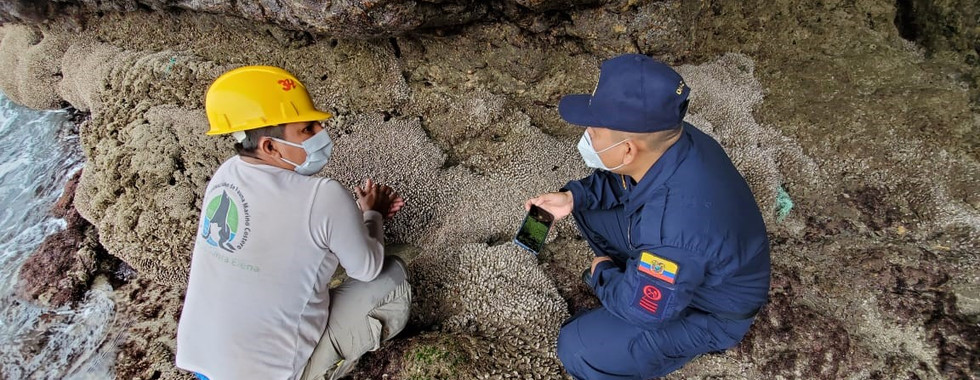
The aftermath of the coronavirus pandemic has triggered a series of policy measures across the world aimed at stimulating national economies to bring them up to speed and reactivate livelihoods. Much of this economic recovery is expected to tap into natural resources provided by our oceans and explore how to increase the contribution of their ecosystem services – the much-touted Blue Economy.
The essential role played by biodiversity faces challenges such as climate change, pollution and habitat fragmentation. But there is another silent yet equally intimidating way we could lose our biodiversity, which is through species invasion. These are non-indigenous species that are introduced outside their native range. Once they survive, and given the right scenario, they establish their populations and, as there are no natural predators in the newly invaded areas, they can become pests. If the species invasion is unattended to, it is just a matter of time before we see many native species, of which some may be poorly known and understood to science, being extirpated from their local range. This in turn will diminish the ecosystem services they have evolved to provide.

Shipping is the most common route by which non-indigenous species are introduced into new areas. Vessels can transport species in two ways, through the discharge of ballast water or through biofouling. Biofouling occurs when species attach to the hull, sea chest, anchor chains or other structures on a ship and are transported as unwelcome passengers around the world.

Efforts to detect and prevent introductions of non-indigenous species depend on understanding which ones are already present, particularly when working with taxonomically challenging groups like marine sponges where morphological characters are limited, and misidentifications are common. This has been the thinking behind the work conducted in Indonesia, steered by its Ministry of Transport and in collaboration with scientists from the University of Bogor, among others. As part of its strategy to assess the current status, Indonesia is conducting a programme of baseline surveys in its main commercial ports and harbours.

Indonesia is a Lead Partnering Country in the GEF-UNDP-IMO GloFouling Partnerships Project and is at the epicentre of the world’s coastal and marine biodiversity, with more than 600 known coral species. For example, although sponges are a major component of the fouling community in coral areas, they remain highly understudied because they are so difficult to identify. Some invasive sponges, such as Mycale grandis and Terpios hoshinota, which are invading many locations across the Pacific and Indian oceans and have the capacity to kill corals. In the case of T.hoshinota, it grows symbiotically with several cyanobacteria and is known for occasional massive outbreaks where it smothers and kills corals and other sessile organisms that would be devastating to the tourism industry. Understanding how these and other species are transferred from one location to another is a key aspect of preserving local habitats.
Port baseline surveys such as the ones conducted in Indonesia provide species inventories in and around ports, with a focus on non-indigenous species that may have been introduced by vessels. A combined use of morphological and genetic characters helps to identify species reliably.

In Ecuador, another Lead Partnering Country of GloFouling Partnerships, the National Directorate of Aquatic Spaces (DIRNEA) has been actively visiting different parts of the country to contact key stakeholders affected by biofouling and invasive aquatic species. Part of Ecuador’s Navy, DIRNEA is the national agency tasked with proactively maintaining safety of human life at sea, the safety of navigation and the prevention of pollution.
During the second half of 2020, a team from DIRNEA made field visits to the coastal provinces of Esmeraldas, El Oro and Santa Elena, where they interacted with aquaculture farming companies and visited scientists at the Centro Nacional de Acuicultura e Investigaciones Marinas (CENAIM).
Shrimp farming is Ecuador's leading non-oil export product. However, diseases are the main limiting factor for production. The damage to the farmed population may have a severe negative impact on its economy. Examples of invasive non-native species include Ascidian tunicates such as the carpet sea squirt Didemnum vexillum and Styela clava. These invasive tunicates have been linked to the maintenance of pathogens that affect commercial bivalves and shrimps, acting as hosts to ostreid herpesvirus OsHV-1 μVar, Vibrio aestuarianus, Bonamia ostreae and Minchinia spp.

Other interactions maintained in Ecuador included visiting ports, shipping companies, offshore drydocks and staff at national marine reserves, to discuss specific issues related to their industries and increase awareness of the initiative to improve biofouling management at the national level. Additionally, several potentially invasive species affecting these industries and habitats were identified by local stakeholders.
Against this backdrop of continuously changing restrictions for travelling or conducting business, it has been particularly encouraging to see how country teams in the GloFouling Partnerships project have shown a high level of resilience and continued their efforts to assess the state of invasive species in their territory.
Efforts undertaken in Indonesia and Ecuador show us that perhaps something is changing. Perhaps COVID-19 has brought a greater awareness of the role played by biodiversity and the need to ensure that future economic policies are guided by sustainability principles and not at the expense of depleting marine species and their habitats.













Comments